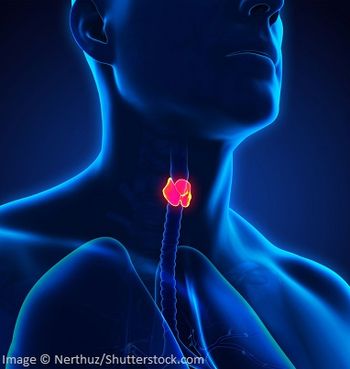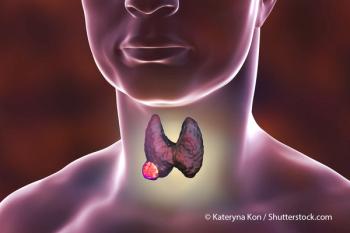
Pre-Op Ultrasound ID’s Important Prognostic Characteristics in Thyroid Cancer
Researchers have identified several characteristics of metastatic papillary thyroid cancer shown on preoperative ultrasound-such as node matting-that are associated with extranodal extension, an important prognostic factor linked with this disease.
Researchers have identified several characteristics of metastatic papillary thyroid cancer shown on preoperative ultrasound-such as node matting-that are associated with extranodal extension (ENE), an important prognostic factor linked with this disease. The results of this study were
“The determination of ENE on preoperative ultrasound may represent a clinical feature to improve preoperative risk stratification by helping to delineate the need for additional surgical expertise and evaluation for central neck dissection,” wrote Jesse R. Qualliotine, BS, of Johns Hopkins University School of Medicine in Baltimore, and colleagues. “Although our study evaluated the use of preoperative ultrasound in identifying lateral compartment nodes suspicious for ENE, one would expect the sonographic features associated with ENE studied herein would also apply to central compartment nodes.”
Prior research has shown that ENE in patients with papillary thyroid cancer is associated with distant metastases, disease progression, and reduced response to radioiodine treatment. Most commonly, ENE is identified during or after surgery. However, with this study, Qualliotine and colleagues sought to determine if ENE could be identified using preoperative ultrasound.
The single-institution study included data from 29 patients who had preoperative ultrasound and pathologic data from neck dissection available. The images were reviewed by two independent radiologists masked to the radiology and pathology reports.
Comparing the characteristics of ultrasound by the presence or absence of ENE, the researchers found that node matting was significantly associated with presence of ENE (odds ratio [OR], 6.67 [95% CI, 1.01–44.10]; P = .049).
Next, they looked at the significance of grouping several ultrasound characteristics and found a 10-fold increase in risk for ENE with the presence of node matting, perinodal edema, unclear margins, or cystic areas (OR, 10.00 [95% CI, 1.05–95.24]; P = .045). In addition, there was also significantly increased odds for ENE with only the presence of node matting, perinodal edema, or unclear margins (OR, 7.07 [95% CI, 1.17–42.85]; P = .03), or node matting or cystic areas (OR, 11.70 [95% CI, 1.85–74.19]; P = .009).
Patients had a 14-fold increase in risk for ENE when three or more ultrasound characteristics were observed (OR, 14.00 [95% CI, 2.06–95.09]; P = .007). Additionally, a score of three or more ultrasound features had a 79.3% accuracy for predicting patients would be positive for ENE.
“Our analysis provides compelling evidence for future studies to evaluate the use of ultrasound for detecting ENE before surgery,” wrote the researchers. “Whether it has a role as another preoperative risk stratification tool requires further prospective investigations. In addition, because the clinical significance of ENE as a prognostic marker is also being reported in head and neck squamous cell carcinoma, this analysis provides preliminary evidence that it is worth investigating this hypothesis in future prospective studies.”
Newsletter
Stay up to date on recent advances in the multidisciplinary approach to cancer.















































































